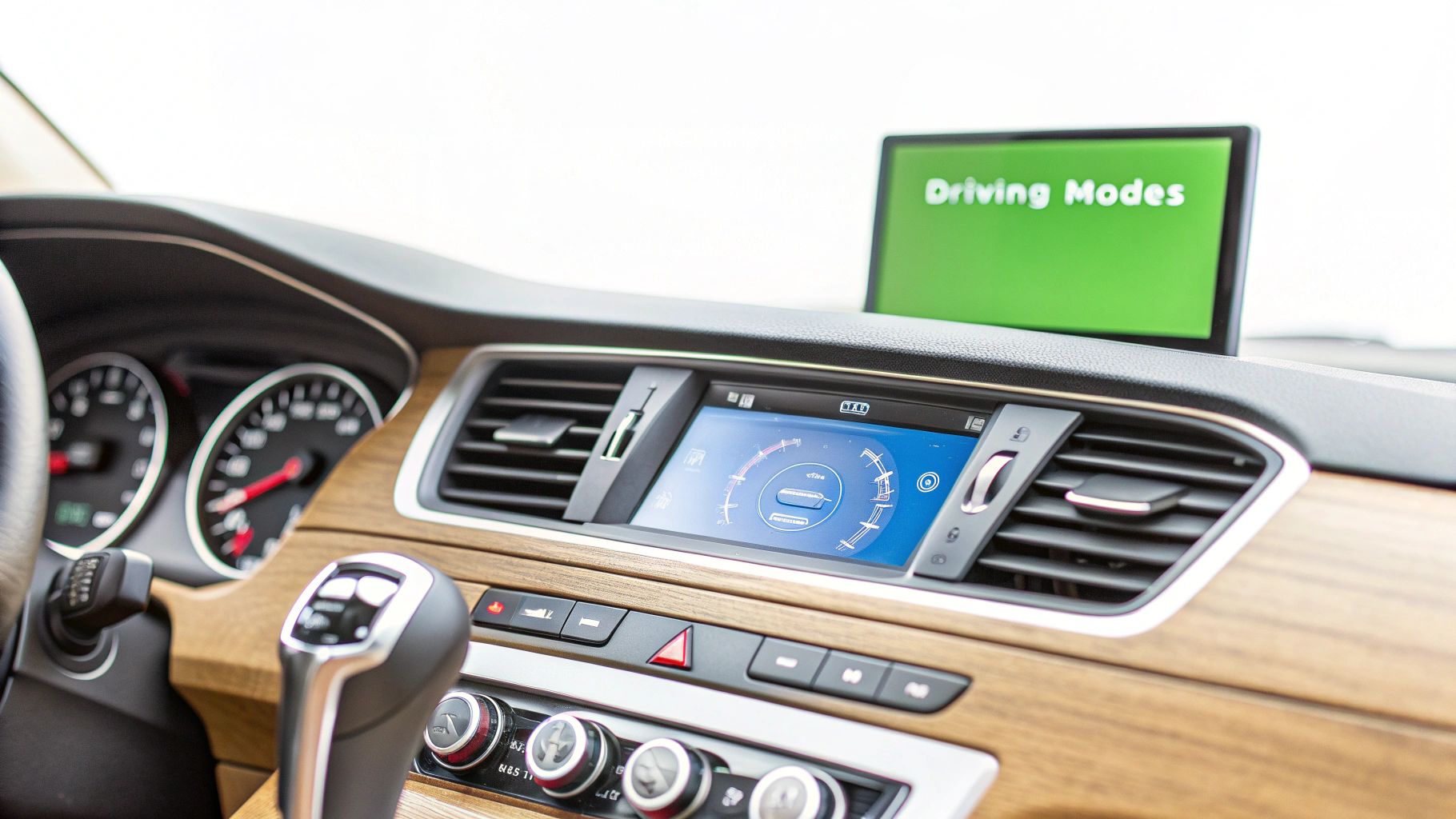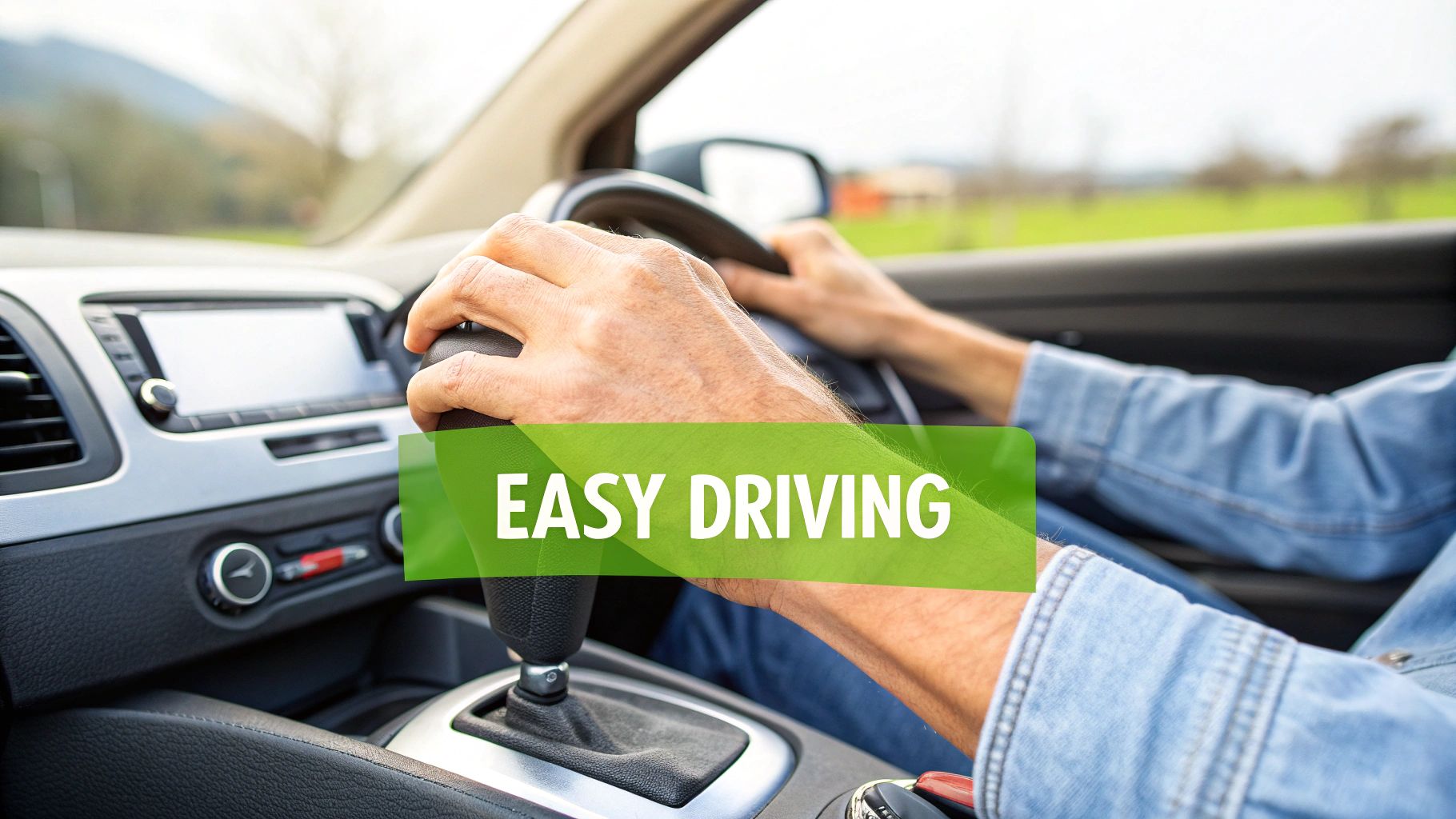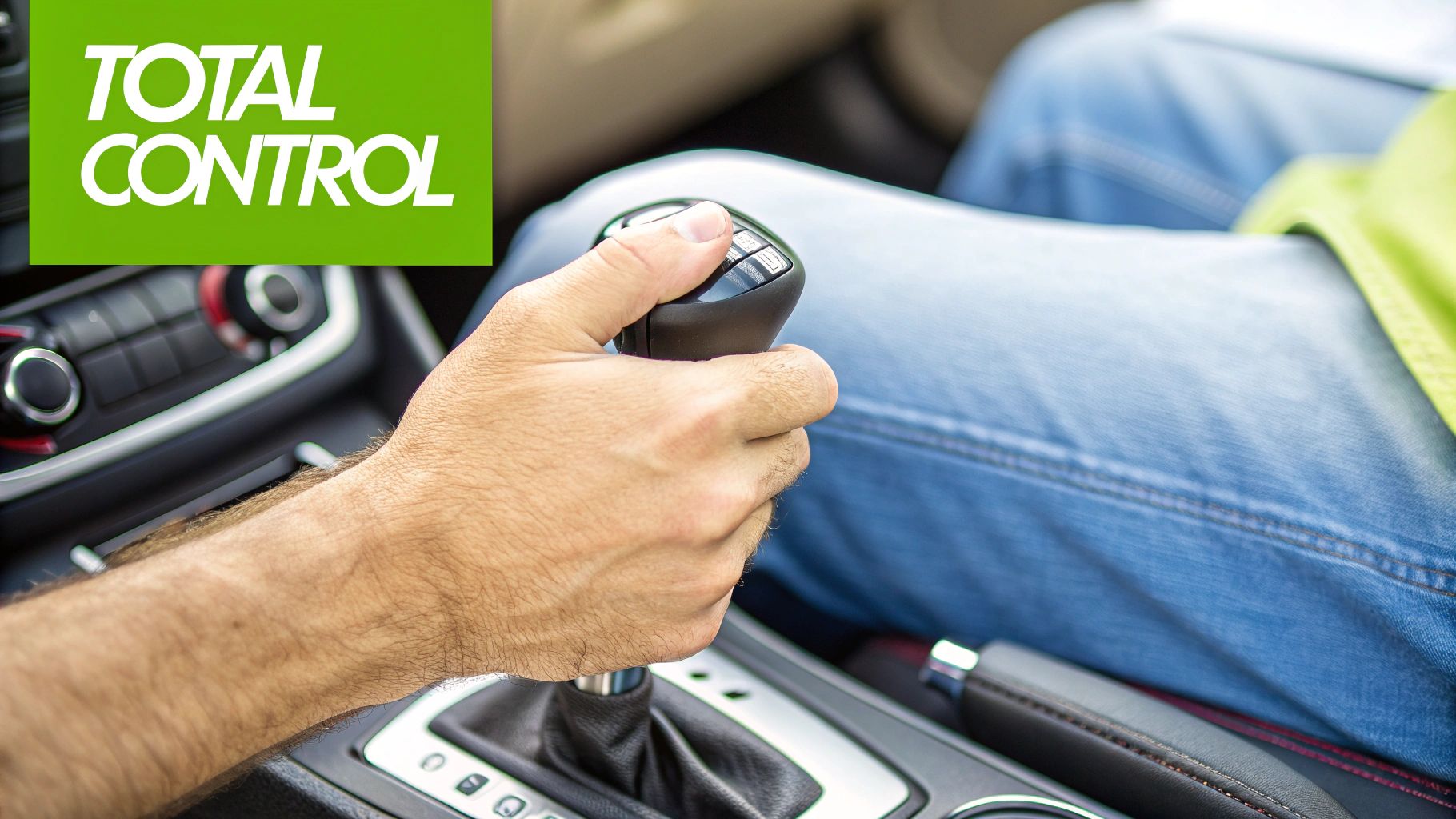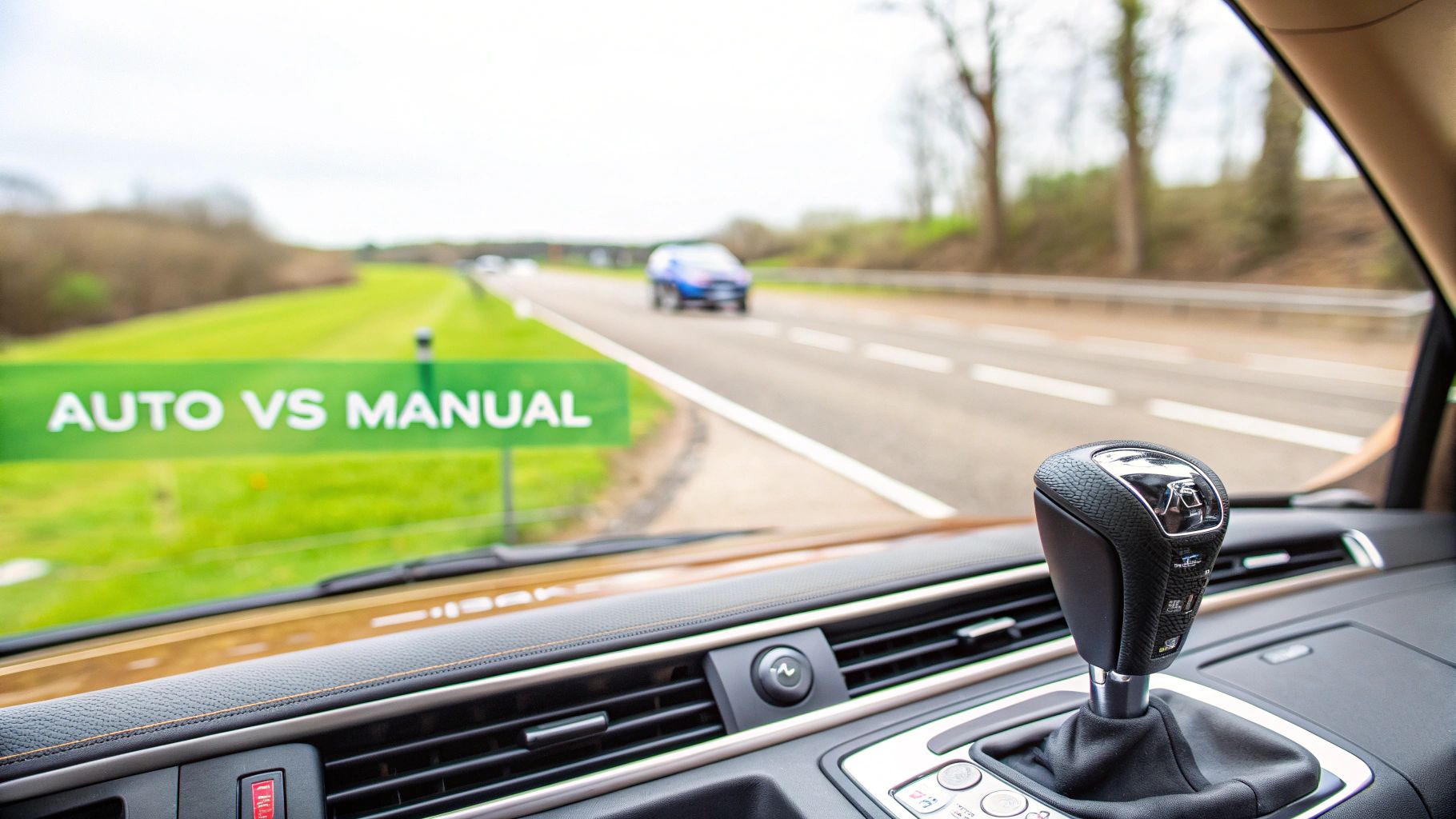The Reality Check: What UK Driving Actually Looks Like Today

This screenshot from the UK government website showcases the numerous resources related to driving. The sheer volume of information, covering everything from learner permits to vehicle regulations, underscores the complexities of driving in the UK. It's a landscape increasingly shaped by the ongoing discussion surrounding automatic versus manual transmission.
The traditional view of learning manual as a rite of passage for UK drivers feels increasingly disconnected from the current reality. Speaking with driving instructors in major cities like London, Birmingham, and Manchester reveals a significant shift in learner preferences. Instructor availability for manual lessons is often harder to come by than for automatic, reflecting the growing demand for the latter.
This isn't just anecdotal evidence. The UK has seen a considerable move towards automatic transmissions in recent years. By 2024, manual transmissions were found in only 22% of new cars sold in the UK, a marked decrease compared to previous years. This trend is fueled largely by the rise of electric vehicles (EVs) and the perception of automatics as easier to manage, particularly amongst newer drivers. The AA Driving School reported a substantial increase in automatic driving test takers. In 2024, 21% of their students opted for and passed their test in an automatic car, more than double the number just five years prior. More information on this decline can be found here: Manual Cars in Decline.
The choice between automatic and manual is no longer simply a mechanical one. It's about understanding the practicalities of driving in the UK today. These shifting market dynamics influence not only learner driver decisions but also the vehicles instructors choose to maintain and the training they provide. This, of course, impacts the overall learning experience, a topic we'll delve into further in the next section. Making a truly informed decision requires acknowledging the current state of the UK driving landscape, not just comparing transmission types in a vacuum.
Inside the Learning Journey: What Really Happens in Your Lessons

This screenshot from the UK government's driving website highlights the key stages of obtaining a driving licence, emphasizing not just the practical test, but the theory and provisional licence aspects too. The choice between automatic and manual transmission is a pivotal early decision, shaping the entire learning experience.
Learning to drive, no matter the transmission, is an emotional rollercoaster. Initially, both manual and automatic learners face unique challenges. Manual learners often experience early frustration with clutch control and gear changes, leading to stalled engines and jerky movements. This can be a real knock to confidence.
Navigating a roundabout, for example, becomes a complex exercise in coordination, significantly increasing stress levels for new manual drivers.
However, overcoming these initial hurdles brings a profound sense of accomplishment. Automatic learners, conversely, typically experience quicker initial progress, feeling more at ease with the basic operation of the car.
This early confidence can be misleading, though. They may not develop the same deep sense of car control as manual drivers in the early stages. Some automatic learners even become overly reliant on the car's systems, sometimes struggling to anticipate and react to changing road conditions independently.
Manual vs. Automatic: A Shifting Landscape
Interestingly, while manual cars still dominate UK roads (approximately 70%), a significant shift is occurring among new drivers. The number of UK drivers with an automatic-only licence has increased by 25% since 2019.
Driving tests taken in automatic vehicles have also seen a staggering 163% rise between 2011-2012 and 2018-2019. For a deeper dive into this trend, check out this article: Will Automatic Transmission Be the Way of Future Driving?.
This growing popularity of automatic transmissions reflects evolving preferences in driver training. Choosing the right transmission isn’t just about the learning process; it impacts confidence and long-term driving habits.
To help visualize the varying learning timelines, let's examine the following table. It highlights key milestones and average progress markers for both manual and automatic learners.
Learning Timeline Comparison: Manual vs Automatic
Average lesson counts, test pass rates, and skill development milestones for each transmission type
| Learning Aspect | Manual Transmission | Automatic Transmission | Difference |
|---|---|---|---|
| Average Lessons Before Test | 45-50 | 35-40 | Manual typically requires 10-15 more lessons |
| Typical Time to First Solo Drive | 10-15 lessons | 5-10 lessons | Automatic learners tend to solo drive earlier |
| Common Early Challenges | Clutch control, stalling, gear changes | Over-reliance on systems, anticipating hazards | Different skill sets are emphasized |
| Test Pass Rates | Slightly lower | Slightly higher | Due to simpler test maneuvers in automatic |
| Long-Term Skill Development | Enhanced car control, better understanding of vehicle mechanics | Easier initial learning curve, smoother driving experience in simpler conditions | Both offer valuable but distinct skills |
This table illustrates the contrasting learning journeys for manual and automatic drivers. While manual learning often involves a steeper initial learning curve and more lessons, it fosters a deeper connection with the vehicle. Automatic learning offers quicker initial progress, but requires conscious effort to develop independent driving skills.
Ultimately, the "best" transmission depends on individual learning styles, driving goals, and the driving environment.
Where Each Transmission Actually Excels in UK Conditions

The RAC website, a valuable resource for UK drivers, offers advice on a wide array of topics. Yet, specific guidance on choosing between manual and automatic transmissions is noticeably absent. This gap underscores the need for practical, nuanced comparisons that go beyond simple checklists.
Deciding between an automatic and a manual car isn't a simple equation. Consider the steep, challenging streets of Edinburgh. In this environment, a manual transmission often provides superior control, particularly for hill starts.
The ability to select the optimal gear instills driver confidence, minimizing rollback and maximizing engine braking on descents. This advantage extends to other hilly regions throughout the UK, such as the Peak District and the Cotswolds.
However, the constant stop-and-go traffic of London presents a different scenario. Here, the automatic transmission truly shines. The elimination of clutch operation and gear changes dramatically reduces driver fatigue, enhancing comfort during long commutes.
This benefit translates to other congested city centers across the UK, including Manchester and Birmingham. For drivers predominantly navigating urban environments, the ease of an automatic becomes a significant advantage.
Furthermore, the UK's diverse and often challenging weather conditions warrant careful consideration. Think of the frequent rain in Yorkshire or the narrow, winding lanes of Devon.
While manual transmissions offer more granular control in slippery conditions, automatics deliver a smoother, more predictable driving experience. This can potentially mitigate the risk of skids or loss of control, a particularly valuable asset for less experienced drivers. New drivers might find automatic driving lessons, often perceived as the easier path, a compelling option.
Ultimately, the ideal transmission for UK driving depends on individual driving habits and the typical environments encountered. A thorough assessment of your regular routes and driving style is essential for making an informed choice. This decision influences not only the learning process but also long-term driving comfort and confidence.
The True Cost Picture: Beyond Learning Fees
Choosing between learning to drive in a manual or an automatic car involves more than just lesson fees. The long-term costs, often overlooked, can significantly impact your budget. This detailed analysis explores the full financial picture for both transmission types in the UK, encompassing insurance, maintenance, and resale value.
Let's first look at current market trends. The infographic below shows the growing market share of automatic cars and compares average fuel efficiency.

The increasing popularity of automatics is clear, and the fuel efficiency gap between manual and automatic vehicles is shrinking. These trends influence both purchase prices and resale values, making them key factors to consider. For those interested in accelerated learning, Intensive Driving Courses can be a good option.
Insurance Premiums: A Shifting Landscape
Insurance is a significant ongoing expense, and the type of transmission you choose does have an impact. Traditionally, manual cars benefited from lower premiums due to perceived lower repair costs and theft risk. However, as automatics gain popularity, this difference is diminishing.

The screenshot above from CompareTheMarket highlights the various factors affecting car insurance quotes. While transmission isn't explicitly listed, it indirectly influences the overall risk assessment. New drivers in automatic cars might face slightly higher initial premiums, while experienced drivers may see minimal difference. This reflects a changing perception of risk associated with each transmission type.
Maintenance and Resale Value: The Long-Term View
Maintenance costs also differ. Manual cars typically have lower repair costs for clutches and gearboxes, which can be substantial expenses. However, regular servicing and potential clutch replacements still accumulate over time. Automatics, while needing less frequent maintenance, can involve more complex and potentially costly repairs when problems occur.
Resale value is another crucial financial aspect. The rising demand for automatics in the UK has boosted their resale value, often closing the gap with manual vehicles. This is particularly important for new drivers. Opting for an automatic might provide better long-term value retention as the market continues to shift.
To illustrate the overall cost differences, let's look at a breakdown:
The table below, "Total Cost Analysis: Manual vs Automatic Driving", provides a comprehensive cost breakdown from learning to long-term ownership. It includes expenses related to lessons, tests, insurance, and maintenance, offering a clear comparison for both manual and automatic vehicles.
| Cost Category | Manual (£) | Automatic (£) | Notes |
|---|---|---|---|
| Driving Lessons (Average 45 hours) | 1575 | 1725 | Based on an average lesson price of £35/hour for manual and £38/hour for automatic. |
| Theory Test | 23 | 23 | Standard fee. |
| Practical Test | 62 | 62 | Standard fee. |
| Insurance (First Year – New Driver) | 1200 | 1350 | Estimated average; varies significantly based on driver profile and car model. |
| Insurance (Subsequent Years – Experienced Driver) | 600 | 650 | Estimated average; varies based on driver history and car model. |
| Average Annual Maintenance | 300 | 400 | Estimated average, includes servicing and potential repairs. Automatics can have higher repair costs. |
| Resale Value after 3 years (estimated) | 5000 | 5500 | Highly variable based on car model and condition. Reflects current market trends favoring automatics. |
This table reveals that while initial learning costs are higher for automatics, the difference in long-term ownership costs can be negligible or even favor automatics due to resale value. It's vital to consider these long-term implications when making your decision.
Thinking beyond the immediate learning phase and considering the broader financial implications is essential when choosing between manual and automatic driving. This long-term perspective will help you make a well-informed decision that aligns with your budget and driving needs.
Preparing For Tomorrow's Driving World
The automotive landscape is changing. Your choice of transmission isn't just about learning to drive today; it’s about navigating the road ahead. The rise of electric vehicles (EVs) and the UK's 2030 ban on new petrol and diesel cars are significant factors that will shape your driving future. These decisions have long-term implications, impacting your vehicle choices and potentially even insurance premiums.
Understanding how today's choices affect tomorrow's options is crucial. The UK government's commitment to net-zero emissions signals a major shift in the car market. This commitment is clearly illustrated in the screenshot below from the government's official announcement.
The increasing dominance of EVs, primarily automatics, will inevitably reshape the used car market. This poses some important questions for learner drivers. Will this influence insurance costs for different transmission types? How will the availability of manual cars be affected in the long run?
The shrinking availability of manual cars in the UK is already a reality. Currently, only 96 models offer a manual transmission compared to 404 automatic-only models. This stark contrast highlights a drastic shift from just a few years ago when manual options were far more common. Auto Express provides further data on this trend, revealing a significant decline in manual car availability. This scarcity is bound to influence resale values and restrict choices for those holding a manual-only licence.
Learning to drive a manual car today might significantly limit your options tomorrow. This restriction affects everything from vehicle affordability to access to certain car types, particularly electric and hybrid models. Consider the long-term cost implications. Resources like these buying guides can be invaluable in helping you navigate these decisions.
The traditional argument for manual driving, often centered on a "more engaging" experience, becomes less relevant with the rise of EVs. Electric vehicles offer a unique driving experience, regardless of transmission. This shift demands a more strategic approach to learning. This guide on how to learn driving fast could prove beneficial.
Choosing a transmission is no longer simply about passing your driving test. It’s about positioning yourself for a driving future shaped by electric vehicles and a transforming car market. Learners must consider both their immediate learning needs and the long-term practicality of their licence within this evolving landscape. This proactive approach ensures your driving skills and qualifications remain relevant and valuable in the years to come.
Your Personal Decision Framework
Choosing between automatic and manual driving in the UK isn't a simple, universal solution. It's a personal decision. This section offers a framework tailored to your individual situation, helping you identify which transmission truly aligns with your learning style, budget, and driving aspirations. It's about empowering you to make the right choice for you, not one based on outdated norms or external pressures.
Assessing Your Individual Needs
Begin by honestly evaluating your learning preferences and comfort levels. Some thrive on multi-tasking, others prefer singular focus. Manual driving demands a higher degree of coordination, while automatic offers a less complex starting point. This fundamental difference profoundly impacts your learning experience, particularly in the initial stages.
Consider your usual driving environment. Do you navigate the busy streets of London, or quieter, rural roads? Stop-and-go city traffic often favors the ease of an automatic, while navigating hilly terrain might make manual control feel more responsive and engaging. Visualize your typical drives and imagine which transmission would enhance your comfort and efficiency.
This DVSA website screenshot highlights the range of driving test options. Remember, the choice between automatic and manual dictates the type of license you receive, which in turn determines the vehicles you can legally drive. This is a decision with long-term implications, extending far beyond the initial learning period.
Your career goals are also a factor. Will your profession necessitate driving specific vehicle types? Some commercial vehicles are primarily manual, while others are predominantly automatic. Understanding your potential career needs ensures your license choice supports your future ambitions. Even personal travel preferences play a role. Planning to rent a car abroad? An automatic license often simplifies international travel. See these Car Rental Tips While Traveling Abroad.
Addressing Common Misconceptions
Outdated perceptions often influence learners. The idea that manual driving is intrinsically "better" or demonstrates greater "skill" persists, despite the evolving reality of UK driving. Automatics now dominate new car sales, and the driving experience itself has transformed. The rise of Electric Vehicles, primarily automatics, further shifts the conversation. The manual vs. automatic debate is now less about skill and more about personal preference and driving style.
Budget considerations extend beyond lesson prices. Manual lessons might be cheaper upfront, but the overall cost analysis includes insurance, maintenance, and resale value. Automatic cars can be more expensive initially, but insurance and maintenance costs are dynamic and may now be comparable to manual vehicles. Resale value varies by make and model, requiring more specific research.
By dispelling these misconceptions and objectively assessing your individual circumstances, you can make an informed decision. The key is choosing the transmission that empowers you as a driver, now and for the years to come. Ready to begin your driving journey with confidence? Fast Pass Driving Courses offers tailored intensive and semi-intensive driving lessons across the UK. Book your course today!

